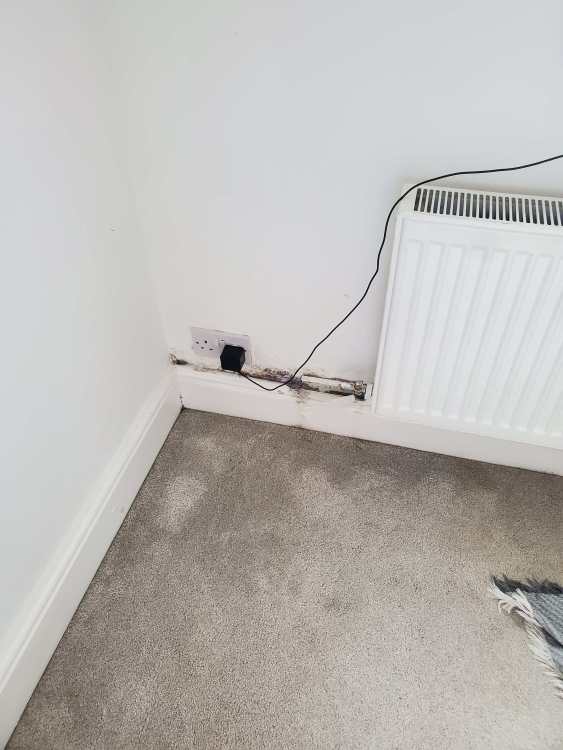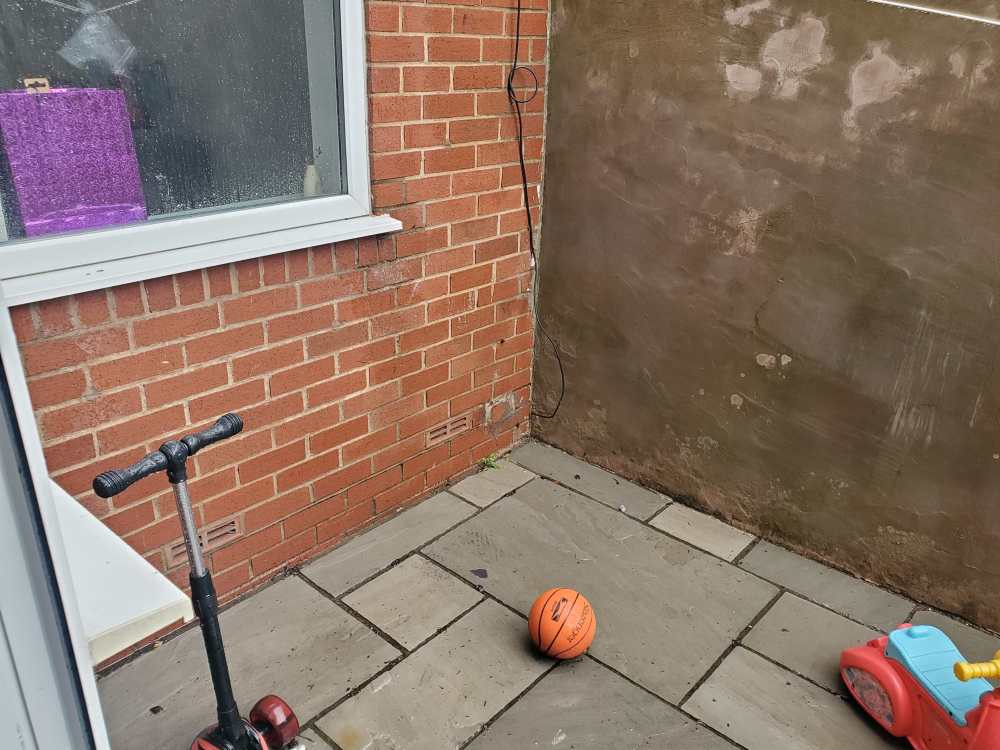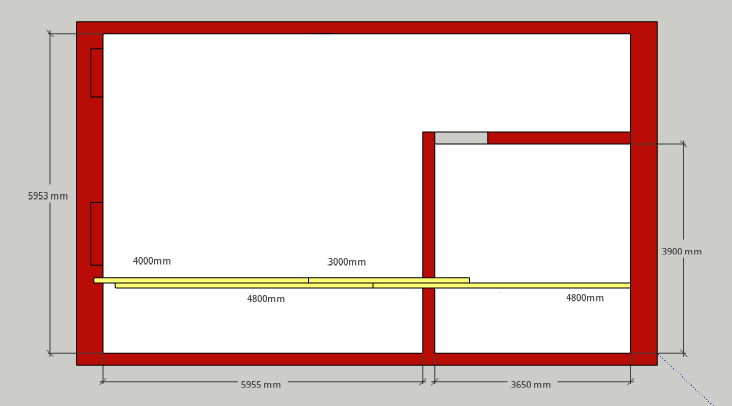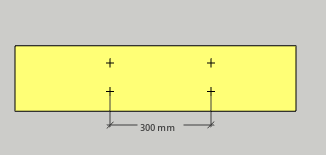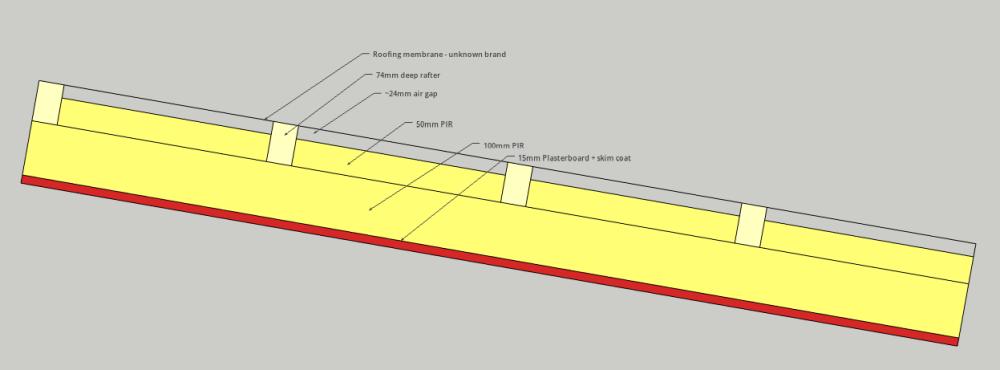-
Posts
59 -
Joined
-
Last visited
Everything posted by Pappa
-
Sorry, plain brick wall. I just guessed that it was cellulose, all I know is that it's white and fluffy. Thanks for confirming. The house is Victorian so 100 or more years, however this brickwork is definitely not Victorian. Not sure when it was given a facelift or why. I was thinking the chemical dpc would be easiest? Will that suffice as a patch up repair job or will I have to replace as like for like? Thanks P
-
Hi guys Please see internal/external photos attached. This was done before I bought the house. I'm pretty sure they've ruined the DPC and hence water travelling through the cavity insulation (probably cellulose) to internal wall. What are my options to repair the DPC please? Thanks P
-
Pros and cons of power raking tools please?: SDS chisel with raker bit. Raker drill bit. Multi tool raker. I've got angle grinder and diamond blade already but I imagine this will be the messiest option.
-
No worries, I won't bother cutting the bricks. I'll just rake them out and fill in the gaps with broken bricks and 3:1 sand cement. Thanks again P
-
Thanks guys I've spoken to SE and it turns out I was mistaken. He wants me to notch/remove brick on both sids of the span to support the timber. Ledger beam is less possible because there are only a few courses of brick above the joists. To make the ledger beam viable we would need too many resin anchor bolts which would make it impractical. It is difficult to specify resin anchor bolts when the loads are this high because their rating is based on tests under laboratory conditions. The margins of error are too high due to installation disparity (dust left in the hole). The only way to be sure would be to stress test each fixing afterwards which is again not practical. The easiest way will be to insert the timber in to the brick wall. He said its up to me how I want to do this, I can remove a couple of bricks and place the timber beam, or I can notch a pocket if I've got the approproate tools/expertise. The load on the left hand side is indeed greater due to longer span; greater floor area; partition walls; heavier bathroom appliances. I'll try my best to cut a couple of bricks using a combination of stitch drilling and diamond/masonry blade. If it is too much effort, I'll just remove some bricks and fill around the timber with mortar. Thanks again
-
SE specifically said no to ledger board on the long side. The resin anchor bolts won't be strong enough to support the weight of the floor as they needto support 4.58kN/m, that would mean having so many bolts it would be impractical/uneconomical. The beams are to go directly in to the masonry wall. We can use a ledger beam on the short side.
-
Thanks guys, really good comments here. Waterproof PVA Glue I think he only wanted to one timber to be go in to the wall so as to disturb the masonry as little as possible (the masonry is to be notched 60mm deep). He feels there was going to be a lot of weight on the left hand side wall as it was supporting a long span, hence he was being more cautious on that side. SE said the other end can be fastened on to a timber ledger beam using joist hangers as that side is supporting a shorter span and hence less weight on the masonry. I've got a question about how to notch 60mm in to the brick... Any tips as to how to achieve this? I was thinking angle grinder, multi-tool and masonry chisel? How likely is it that I'll end up breaking the brick? Thanks again P
-
Reasons for sistering as per SE: 1) Steel beams just aren't possible. 2) 6m lengths are premium priced, 4.8m etc are more reasonably priced and easier to handle / not as heavy. 3) Sistering joists (2x8inch) like this and bolting them together with steel screws gives more strength than what a 4x8 inch timber beam would have provided. This is important as it is a long (6m) span. 4) Deeper joists aren't an option because it messes with the staircase/attic headheight + cost of deeper joists increases exponentially. Let me know if you've got any more advice about how to easily fasten these together. I can do it on a trestle table and then lift the beam up, however, by the time they're all fastened together, the weight will be significantly greater and difficult to maneuvre, it will be easier if fastened in situ. Cheers
-
Thanks for the reply. How do I ensure I'm bolting them together straight? Its hard to find straight timber, by the time I've bolted the 4th timber on, I could be way off.
-
Hi Guys My Structural Engineer has designed a new attic floor for me. The diagram shows only 1 joist for brevity (structural walls in red): He has chosen 4m, 4.8m 3m lengths as they can be picked up off the shelf cheaply. He said 6m is also available at timber merchants but substantially more expensive. This is a side view as to how the joists are to be bolted together: I'm not disputing the structural side of it. But not sure about the practicality of fastening two lengths of timber together while floating in mid air. Do you have any tips or tricks that I can employ to do this? If no, I might go back to SE and ask for a 6m length timber as the main beam so atleast thats supported by the the masonry wall on either side of the long span, the sister joists will then be easier to screw together. Thanks in advance P
-

Roof insulation / air gap design
Pappa replied to Pappa's topic in Lofts, Dormers & Loft Conversions
Screw through the insulation in to the rafters using plastic insulation fixings to minimise thermal bridging. -
The key when settling small particles is to have multiple stratifying tanks, smaller containers but many of them is more efficient. I've got a near unlimited supply of these. My brother dug out his basement about 20 years ago and he swears by it. Its been a play room for his kids, then they grew up and it became a study, then a warehouse for when he ran an ebay shop, then an office when he was WFH +- a place to dump extra storage and bulky appliances - washer/dryer/chest freezer/boiler etc. My neighbour did the same thing. He doesn't need the space but he's making £800 pcm in rental income. There is already a basement underneath half of the house, but I need to excavate down by 500mm to give me a comfortable 2.4m head height + tanking/insulating the floor. I'm thinking if I'm excavating that, I might as well excavate the other half of the house and underpin it as per SE spec. In terms of the economics, houses sell for 2.5k per sq m at the moment where I live. The quotes given by builders/architect/SE makes me think I will recoup the cost of the basement dig out and make a profit when I sell +- appreciation. The basement is 50 sq m and almost a perfect square. Until you guys advised me against the idea, I was going to make the controlled hole for my water pit slap bang in the middle so its away from the foundations. I'll stick to spade and wheelbarrow for now though. This project will be a slow burner - a weekend project for me and my son. Thanks again P
-
Thanks The extension is being demolished and rebuilt so I guess I'll just rewire it even if the PVC cable is ok. Thanks again P
-
Thanks guys. I'll keep water out of my basement. Excavating foundations for a new outhouse away from the existing house and other foundations... Could this work here? Thanks again P
-

Roof insulation / air gap design
Pappa replied to Pappa's topic in Lofts, Dormers & Loft Conversions
Thanks guys Any work I'm going to do will be from inside only and I don't fancy disturbing the existing membrane/rafters/slates as the roof has only been renovated in the last few years by previous owner. I'll stick with the air gap and the above design. Thanks again P -
Thanks for the comments guys. I might just take a wide berth around this one then. I got the idea from excavation companies who offer this as a service. They basically come in with a jet wash and a powerful pump. They claim the holes are dug cheaper, and more neatly. Granted, their main clientelle are those who don't want to accidently damage underground services with sharp spades. I'm wondering if my basement could be dug out without breaking my back and easier and cheaper and with a nice purified byproduct too that doesn't go in the skip/landfill. This could be done in a completely passive way as I'm not pressed for time. The system would only be switched on when I'm close enough to keep an eye on it. Thanks again P
-
Hi guys I've got some asbestos floor tiles I need to remove and just need a sense check to make sure I'm not missing anything. I've got FFP2 disposable face mask, disposable coverall and disposable gloves. I will wet the tiles with a mist spray and apply the least amount of force on the crowbar to losen the tiles. Tiles and PPE to be disposed of in plastic bags provided by Council. What about the adhesive under the tiles? To what extent will that be contaminiated with asbestos? Let me know if you've got any more tips. Thanks P
-
Hi guys My structural engineer has given me his blessing to excavate a basement under my house (clay and silt). I'm thinking of sending rain water down there, in to a controlled hole, to suspend the clay. A dirty pump would then send the slurry up in to settling tanks. I want to do it in the most eco friendly and passive way, not necessarily the fastest. My idea is to filter the clay and pass it on to local schools etc if it saves it going to landfill. Could this work? Thanks P
-
Hi guys I'm rewiring my house which has old rubber cable. I'll be rewiring everything myself and asking Electrician to do the bits that I'm not allowed to do such as consumer unit connections. There is an extension that was built in the 70's and it looks like it was built with modern PVC cable. Is it worth replacing this or shall I just check continuity etc and let it be? I'm not looking for the cheapest option, just the least hassle. Thanks P
-

Roof insulation / air gap design
Pappa replied to Pappa's topic in Lofts, Dormers & Loft Conversions
Good shout, will definitely keep that in mind for future projects. For now, I've already got the roof structure in place and its a conservation area so I have to use rickety old roof slates. I'll take your advice @ETC and @Redbeard and keep the 50mm (49mm) gap. Please can you sense check this: This gives U Value of 0.176 Using 0.022W/mK PIR. Thanks in advance P -

Roof insulation / air gap design
Pappa replied to Pappa's topic in Lofts, Dormers & Loft Conversions
Apologies. I got carried away with the drawing. This is the corrected diagram - side view, as though looking down from the ridge beam down to the eaves: Are there minimums for the air gap? Head height is at a premium in the attic so Structural engineer is trying to save space where he can. Thanks P -
Hi Guys My Structural Engineer has suggested this for me for my 31 degree pitched roof, attic conversion Let me know your thoughts please, in particular about the air gap - He said as long as the roofing membrane is not touching the PIR, its fine. Rafter dimensions is 74 x 46 mm @ 430 centers. Thanks in advance P
-
Good sound advice @Gus Potter and @Iceverge I don't have sectional drawings I'm afraid but I'll ask my architect to have a mess around with the stairs. My Structural Engineer is back from holiday next week so will speak to him and feed back here. At the start, you all advised me to get some joist companies to design something for me, I've had lots of quotes back at 220mm deep in I-joist and Web. Prices ranging from 1.7 to 2.7k including all fixtures. This is not far off the 1.6k material cost for 195mm deep C24 at 200 centers (which hasn't been validated by SE). So 220mm is the depth to beat as things stand. Thanks again for all your help.
-
Personally, I would have liked to go lower, but I'm going to hit the windows if I go lower than this, not only do I not want to build a ramp over the windows, but there is some very ornate Victorian architraves around the windows which I'm hoping to preserve. So I'm kind of stuck at 2760mm in the rooms below. Happy to compromise elsewhere eg. expensive/awkward attic floor installation. Thanks again P
-
Thanks for the relys. 2760mm I got the stair dimensions from stairbox and staircreator and verified with architect. Oh snap. I did not think of that. So I am putting in planning permission and these plans are likely to be accepted I'm told, but am I right in thinking building control do their own thing as per their interpretation of regs? So even though plans are approved, BCO could block me from proceeding with 1.8m head height?


